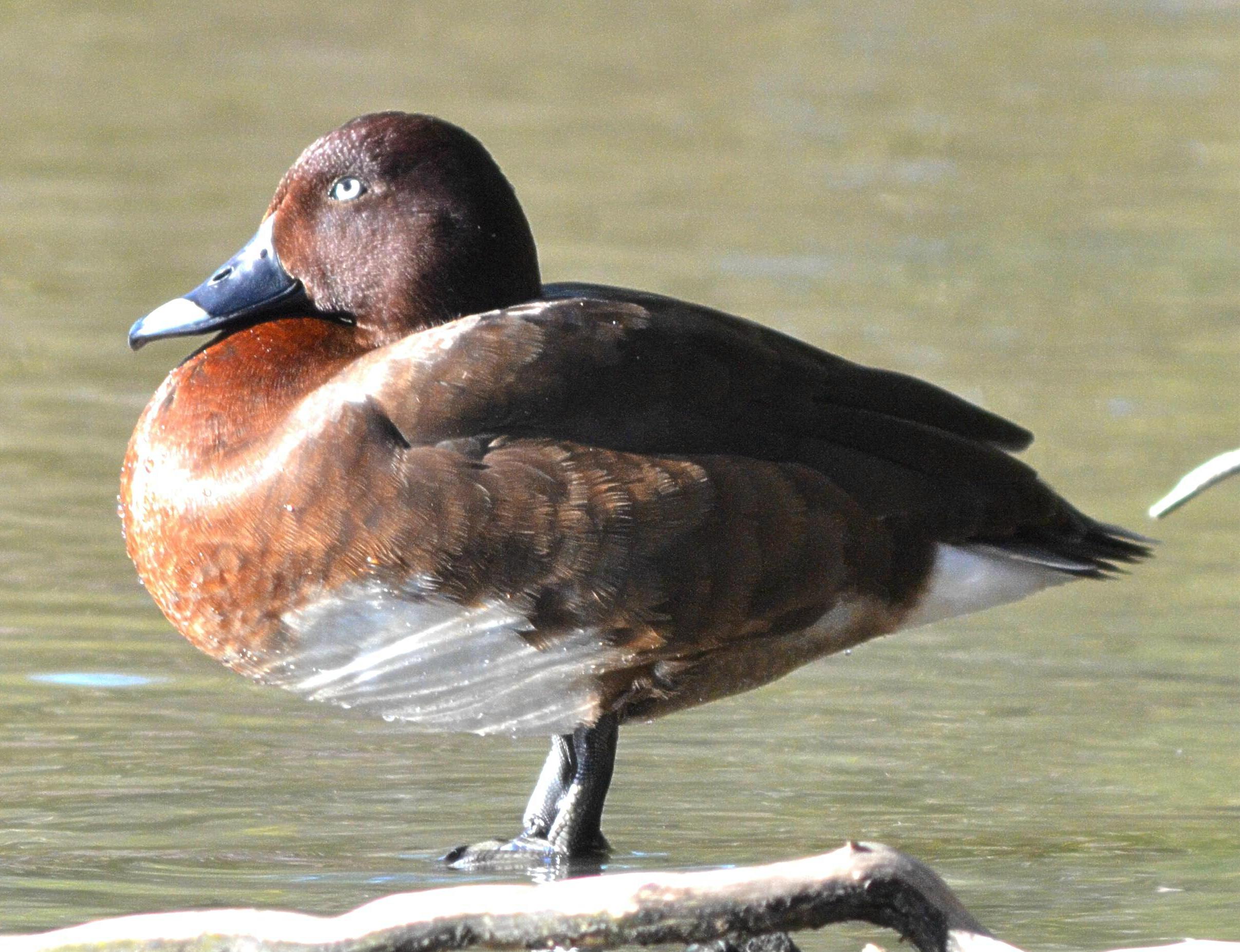
Hard-head, or White-eyed duck(Aythya australis)
Phylum —chordata
Class — aves
Order — anseriformes
Family — anatidae
Genus –aythya
Appearance
Hardheads are small by duck standards, usually not much more than 45 cm long but reaching 60 cm sometimes, and noticeably more rounded in overall form than most ducks. Both male and female are a fairly uniform chocolate-brown above, with rufous flanks and white undersides (which are often not visible if the duck is in the water). The trailing edges and almost the entire underside of the wings are white. In the male, the eyes are a striking white, in the female, brown.
Habitat
Hardheads are common in the south-east of Australia, particularly in the Murray-Darling Basin, but also in the wetter country near the coasts.
Behavior
These birds are moderately nomadic in normal years, but disperse widely in times of drought.
Hardheads prefer larger lakes, swamps and rivers with deep, still water, but are often seen in smaller streams, flooded grasslands, and shallow pools. As a general rule, they avoid coastal waters. They rarely come to land and never perch in trees.
Diet
Hardheads eat a broad range of small aquatic creatures, and supplement this with water weeds.
Reproduction
Hardheads breed in low, thick vegetation, in or near the water, along rivers and channels and around billabongs and dams. The nest is a trampled platform of reeds, sticks and vegetation, with some down lining. The nest is built by the female, and is often added to with what she can reach from the nest. She incubates the eggs alone.
The average lifespan is about 15 years.
In captivity
During the process of breeding, it is recommended to use deep reservoirs with fresh water, but, nevertheless, with dense vegetation, since most of their time these ducks spend on the water.
They are easilybred in captivity. As a nesting place, you can use a 30x30x35 cm birdhouse with an entrance hole of 12.5 cm.
Both vegetable and animal feed should be used in the diet.
The birds are social ones. They must live in small groups, may even be kept with other species.
 Russian
Russian
 English
English
























